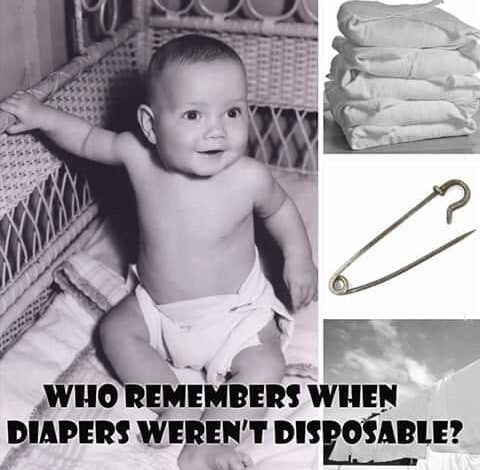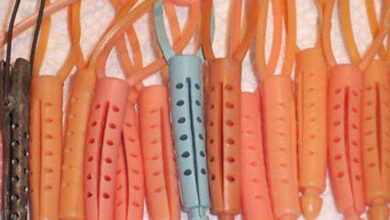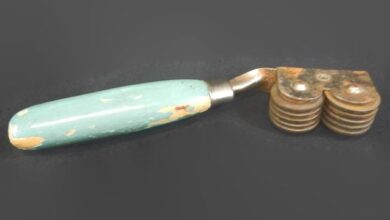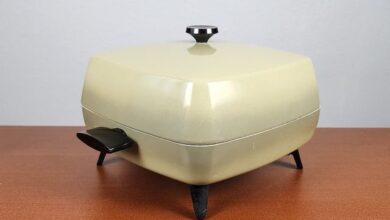A Look Back at Cloth Diapers: When Diapering Wasn’t Disposable

ADVERTISEMENT
A Look Back at Cloth Diapers: When Diapering Wasn’t Disposable
Introduction: Long before the invention of disposable diapers, parents relied on cloth diapers to keep their babies clean and dry. These diapers were simple, reusable, and secured with large safety pins. While today’s parents may appreciate the convenience of disposables, cloth diapers hold a special place in parenting history. Interestingly, cloth diapering has made a comeback, driven by environmental and economic considerations. This article explores the journey of cloth diapers, their impact, and why some parents are choosing them again today.
The Early Days of Diapering: Cloth diapering dates back centuries, with some of the earliest versions being basic pieces of cloth wrapped around a baby’s bottom. By the late 19th and early 20th centuries, parents in industrialized nations typically used rectangular pieces of soft, absorbent fabric folded and secured with pins. These diapers were washed, hung to dry, and reused, becoming a daily part of childcare routines.
ADVERTISEMENT
Safety pins, as seen in the image, were essential for keeping the diapers in place. Parents had to be cautious while fastening them, as they needed to avoid accidentally poking the baby. The image also highlights drying lines—an essential part of this routine, as drying in the sun helped to naturally bleach and sanitize the fabric.
The Rise of Disposable Diapers: Disposable diapers were first introduced in the 1940s and gained popularity in the 1960s with the launch of Pampers. These early disposables were a revolutionary product, freeing parents from the labor-intensive routine of washing and drying cloth diapers daily. Over the decades, disposables became more absorbent, comfortable, and convenient, and soon they dominated the market. For many, disposables were seen as a symbol of modern parenting, providing both convenience and ease of use, especially for busy families.
By the 1980s and 1990s, disposable diapers were the standard in most households across developed nations, leading to a decline in cloth diaper use. However, this shift had a downside—disposable diapers introduced a significant environmental impact due to the sheer volume of waste they generated.
The Environmental Impact of Disposable Diapers: Disposable diapers are made with a combination of plastic, absorbent gels, and other materials that take hundreds of years to decompose. The convenience of disposables comes at an environmental cost, with billions of diapers ending up in landfills each year. Environmentalists and health-conscious parents began raising concerns about these issues in the late 20th century, sparking discussions about sustainable diapering practices.
The Modern Resurgence of Cloth Diapers: In recent years, there has been a resurgence in the popularity of cloth diapers, driven by several factors:
ADVERTISEMENT
- Environmental Awareness: Many parents are becoming more environmentally conscious and seeking ways to reduce waste. Cloth diapers are reusable, washable, and, when cared for properly, can last through multiple children, making them a sustainable alternative.
- Cost-Effectiveness: Disposable diapers can be expensive, particularly over the two to three years a child typically wears them. Cloth diapers, although initially more costly, can save money in the long run, especially if used with more than one child.
- Health Considerations: Some parents are concerned about the chemicals used in disposable diapers and prefer the natural fabrics of cloth diapers. Modern cloth diapers are often made from organic cotton, bamboo, or other natural materials that are gentle on a baby’s skin.
- Innovation and Convenience: Cloth diapers have evolved significantly since the days of safety pins and plain cloth. Today’s cloth diapers come with snaps or Velcro closures, waterproof covers, and liners that make them easier to use and clean.
Challenges and Rewards of Cloth Diapering: While cloth diapering has many benefits, it also comes with its own set of challenges. Washing diapers requires time and access to laundry facilities, and many parents find the routine labor-intensive. Additionally, cloth diapers are bulkier, which can make them less convenient for travel or long outings. However, for many families, the benefits outweigh these challenges, and they find satisfaction in using a sustainable, cost-effective diapering solution.
Cloth Diapers in Today’s Parenting Culture: For many modern parents, cloth diapering is more than just a choice; it’s a lifestyle decision that aligns with values of sustainability and mindfulness. Many who choose cloth diapering enjoy a sense of connection to previous generations, knowing they’re participating in a time-honored practice. Additionally, online communities and resources have sprung up to support parents in this journey, offering advice, tips, and a sense of camaraderie.
Conclusion: The image of a baby in cloth diapers, complete with safety pins and cloth layers, is a nostalgic reminder of an era before disposable convenience took over. Today, cloth diapering is making a comeback as more parents seek environmentally friendly, health-conscious options. Though cloth diapers require more effort, for many parents, they represent a commitment to sustainability, a connection to tradition, and a conscious approach to raising children.
As society continues to grapple with environmental challenges, the resurgence of cloth diapering serves as a reminder that sometimes, the old ways still have value in the modern world. Whether parents choose cloth, disposable, or a combination, the goal remains the same—to provide the best possible care for their children, while also considering the world they will inherit.
ADVERTISEMENT




